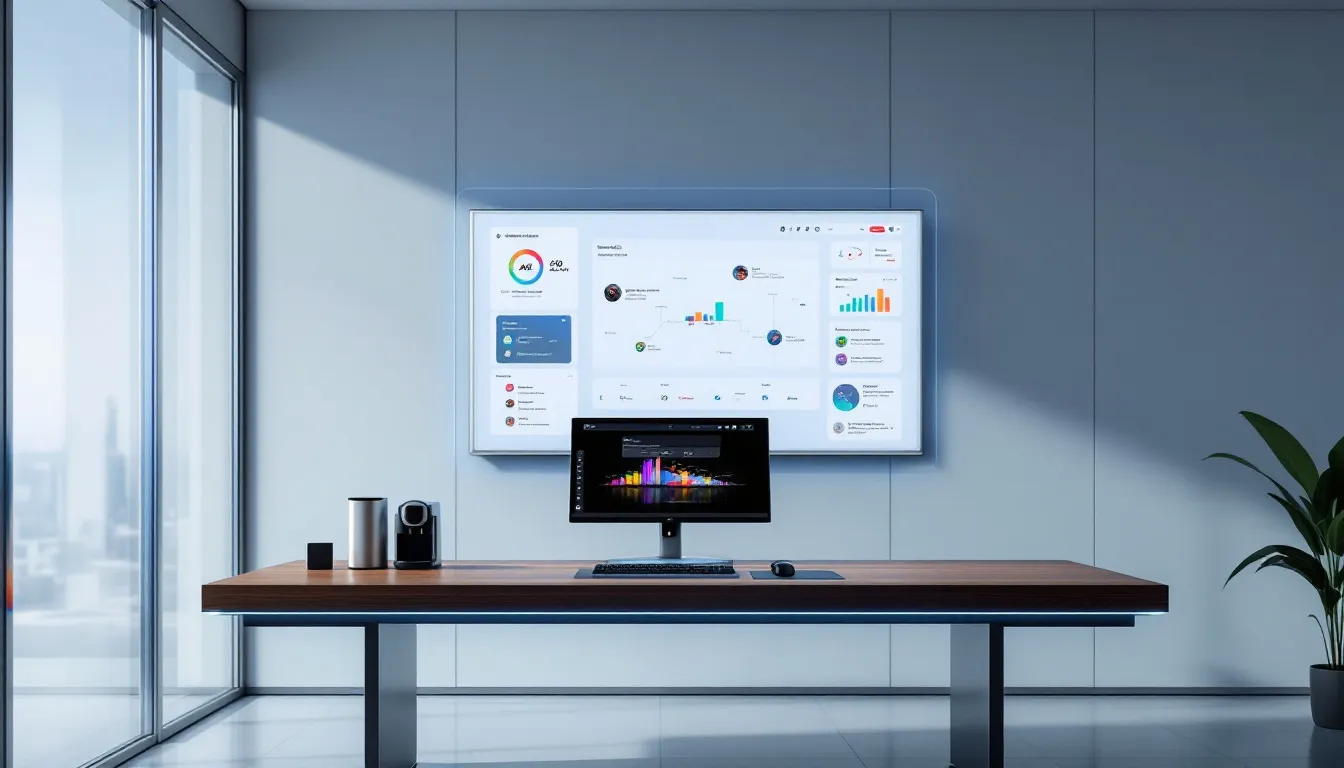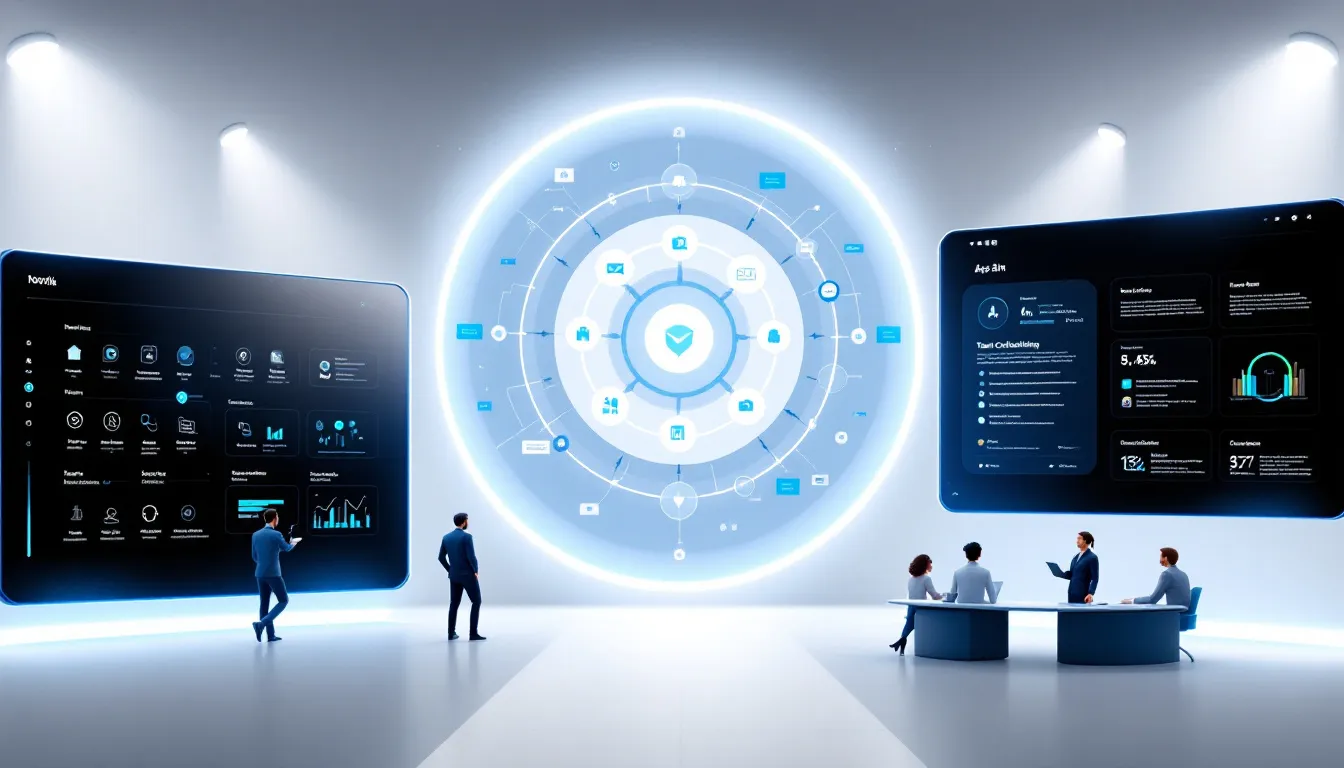
Top Tips for Personal Workflow Management to Boost Your Productivity
Are you struggling to keep up with your to-do list and feeling overwhelmed by the chaos of daily tasks? Personal workflow management can be the answer to your productivity woes. In this article, we’ll break down how to streamline your tasks and responsibilities, helping you to achieve more with less stress.
Key Takeaways
- Personal workflow management provides a structured and adaptable approach to enhance productivity in both work and personal life.
- Key components of an effective workflow system include identifying specific goals, prioritizing tasks, and utilizing the right tools to reduce mental burden.
- Regular monitoring and optimization of workflows are essential to maintain productivity and efficiency, helping to identify bottlenecks and streamline processes.
Understanding Personal Workflow Management

Personal workflow management is a game-changer for navigating the complexities of modern life. Unlike traditional time management methods, which often focus solely on scheduling tasks, personal workflow management offers a more holistic approach. It’s comprehensive, easy to use, and designed to adapt to the unique challenges we face today.
One of the key characteristics that set personal workflow management systems apart from traditional time management systems is their ability to provide a comprehensive structure that is easy to navigate amidst modern complexity. This adaptability makes them suitable for both professional and personal realms, enhancing overall satisfaction and productivity.
Effective personal workflow management prioritizes clarity and productivity over chaotic task handling. Organizing tasks and responsibilities in a structured manner helps individuals focus on what truly matters without feeling overwhelmed. This approach not only improves time management but also enhances the ability to manage various aspects of life.
A well-structured personal workflow management system enhances time management by breaking down larger goals into manageable tasks, leading to a sense of accomplishment and motivation. This system provides a clear roadmap, ensuring that nothing falls through the cracks.
Implementing a personal workflow management system leads to improved satisfaction and productivity in both professional and personal life realms. It’s not just the beginning; it’s about creating a balanced and fulfilling life.
Key Components of an Effective Personal Workflow System
Creating an effective personal workflow system involves several key components. One of the most crucial aspects is identifying specific outcomes. Knowing what you want to achieve sets the foundation for a productive workflow.
The Macro to Micro approach is highly effective. This involves breaking down larger goals into achievable monthly and weekly objectives. By doing so, you can maintain a clear focus on the big picture while managing day-to-day tasks efficiently for medium sized businesses.
Using a simple To-Do, Doing, Done list is another effective strategy for managing numerous varied tasks. This method provides a clear visual representation of what needs to be done, what is currently being worked on, and what has been completed.
Prioritization is essential in personal workflow management. Focusing on important tasks first shortens completion times and reduces the stress of looming deadlines. This ensures that you are always working on what matters most.
Personal workflow management emphasizes the importance of adapting plans dynamically in response to new information. Flexibility is key to staying productive in a constantly changing environment.
The success of a personal workflow management system relies on the integration of habits and tools tailored to an individual’s unique lifestyle. This means finding tools and developing habits that complement your work style and personal preferences.
A personal productivity framework should only present essential tasks within a chosen timeframe, avoiding overwhelm and ensuring focus on what truly matters. This approach helps in managing time more effectively.
Organizing tasks in a single system reduces stress by storing everything in one place, freeing up mental space. This centralization of tasks ensures that nothing is forgotten and that you can focus on the task at hand without distractions.
By incorporating these key features, you can create a personal workflow system that enhances productivity and ensures that you stay on top of your tasks.
Choosing the Right Tools for Your Workflow

Selecting the right tools for your workflow is crucial for maximizing productivity. To-do list apps are a great starting point. They help in easier organization of priorities and reduce mental burden. Apps like Focus To-Do, which is available on mobile, desktop, and as a Google Chrome extension, make it accessible across devices.
Project management tools can also serve as task trackers, especially for teams already using these systems for their workflows. Projectsly, for instance, offers multiple views (List, Kanban, Calendar, and Gantt charts) to enhance project management. Similarly, Monday.com is easy to use for both individuals and project managers, helping streamline workflows.
ClickUp is an all-in-one app for tasks, documents, chat, and goal-setting, making project management seamless. Its comprehensive features make it a powerful tool for managing workflows.
Note-taking apps like Evernote, which are available on various platforms including desktop, iOS, and Android, are essential for effective note management. The main purpose of these apps is to quickly save ideas as they come, ensuring that no brilliant thought is lost.
The Forest app enhances focus by combining a timer with a distraction blocker. This app is particularly useful for those who struggle with maintaining focus for extended periods.
Digital tools are generally more efficient than paper systems for organizing life. They offer the flexibility to manage and access information from anywhere, making them indispensable for modern productivity.
Trello, using a kanban boards style, offers an intuitive visual way to manage tasks and schedules. Its visual approach makes it easy to see the status of various tasks at a glance.
Choosing the right new tools tailors your user friendly workflow system to your needs, enhancing productivity and reducing stress.
Creating Custom Workflows for Different Tasks
Creating custom workflows for different tasks is essential for effective workflow management. A recommended approach for structuring workflows is from macro to micro, breaking down goals from the big picture to monthly and weekly objectives.
Digital calendars should contain time-sensitive commitments to help manage schedules effectively. Tracking meetings and establishing daily routines with Outlook Calendar enhances workflow management.
Time-blocking applications combine task lists with calendars to facilitate efficient scheduling. This method ensures that you allocate specific time slots for different tasks, enhancing focus and productivity.
Tools such as Kintone provide a drag-and-drop builder to assist users in designing custom workflows that were created with this feature, allowing for easy customizable features and adaptation to specific needs.
Focus To-Do allows users to assign tasks by splitting them into smaller subtasks to help reduce overwhelm, aiding in task management. This approach ensures that large tasks are broken down into manageable pieces, creating a clear list of to dos.
The workflow generator from Qntrl enables users to map workflows quickly as flowcharts, enhancing visual understanding. This visual representation helps in identifying the flow of tasks and potential bottlenecks.
Starting a workflow typically involves filling out a form with necessary information based on the workflow requirements, which helps in creating detailed processes on Process Street. This initial step is crucial for setting the stage for a smooth workflow.
Creating custom workflows tailored to different tasks ensures that each task is handled efficiently, leading to improved productivity and reduced stress while you manage workflows and creating workflows.
Workflow Automation for Personal Use

Workflow automation for personal use can be a game-changer. By reducing the time spent on manual tasks, automation can lead to quicker project completion and increased operational efficiency. Automating routine tasks helps maintain workflow efficiency by minimizing manual errors. This ensures that tasks are completed accurately and on time.
Workflow automation can significantly enhance personal productivity by allowing users to focus on higher-value tasks instead of repetitive chores. This shift in focus can lead to more meaningful and fulfilling work. Automated workflow systems with automation features save time on manual tasks and enhance efficiency. These systems streamline processes, ensuring that tasks are completed more quickly and with fewer errors.
Pre-installed workflow apps help to simplify repetitive tasks and manage recurring tasks. They also assist in pinpointing areas where efficiency may be lacking. These apps are designed to handle repetitive processes, freeing up time for more important tasks. Automated processes consist of a series of repeatable tasks which can be efficiently managed. This consistency ensures that tasks are completed the same way every time, reducing variability and increasing reliability.
Automated business applications help reduce repetitive tasks and enhance productivity. By automating these business processes, individuals can focus on more critical areas of their work. Automated workflow systems can save time by automating document submission and processing. This automation reduces the need for manual intervention, speeding up processes and reducing errors.
Implementing workflow automation for personal use can lead to significant time savings and increased productivity workflow, allowing individuals to focus on what truly matters.
Integrating Workflow Management with Team Collaboration Tools

Integrating workflow management with team collaboration tools is essential for better coordination and productivity. Automating workflows facilitates better communication and collaboration by keeping all team members informed of task statuses. Automation technologies can integrate with existing systems, streamlining data exchange and improving overall efficiency. This integration ensures that all necessary information is readily available to team members.
Collaboration tools centralize team communication, enabling real-time collaboration regardless of location. This centralization reduces miscommunication and ensures that everyone is on the same page. Using collaboration tools can streamline workflows, automate repetitive tasks, and enhance information accessibility. These tools provide a platform for team members to share updates and challenges more effectively.
Regular updates through collaboration tools foster a culture of transparency and accountability within teams. This transparency ensures that everyone knows what is expected of them and can work towards common goals. Effective communication during workflow transitions reduces delays and enhances overall productivity. By ensuring that everyone is informed of progress and changes, teams can work more efficiently.
Integrating personal workflow systems with team communication tools is essential for better coordination and productivity. This integration ensures that personal and team workflows are aligned, leading to more efficient and effective collaboration. By integrating workflow management with team collaboration tools, you can enhance communication, reduce miscommunication, and ensure that all team members are working towards common goals.
Overcoming Common Workflow Management Challenges
Overcoming common workflow management challenges is crucial for maintaining productivity. A major reason for feel overwhelmed and overloaded in personal workflow management is constant communication and distractions. Living in the digital age creates challenges such as disorganization and stress. The constant stream of notifications and social media apps can significantly impact workflow, as individuals are constantly bombarded with interruptions.
Types of distractions impacting workflow can include a constant stream of notifications and social media apps. These distractions can make it difficult to stay focused and productive. Distraction blocking apps can help tackle issues of distractions during work. Apps like BlockSite offer features such as blocking distracting URLs and providing password protection for settings.
BlockSite’s powerful features enhance focus by blocking distracting URLs and providing password protection for settings. This ensures that you can stay focused on the task at hand without being interrupted. Effective strategies to enhance productivity include planning ahead, avoiding multitasking, and reducing distractions. Implementing these strategies helps you stay focused and productive.
Recognizing and documenting workflows that are not well-defined can help streamline processes. This documentation ensures that workflows are clear and well-structured. Addressing these common challenges helps maintain productivity and ensure an effective workflow management system, enhancing workflow and document management.
Case Studies: Successful Personal Workflow Systems

Case studies of successful personal workflow systems provide valuable insights. A personal workflow management system can significantly impact productivity by making individuals feel happier and more engaged in their work.
Utilizing workflow automation can help boost employee morale by allowing them to engage in more meaningful work rather than mundane tasks. This shift in focus can lead to higher job satisfaction and improve productivity.
Insights from super-productive individuals emphasize the importance of learning new processes, adaptability, and leveraging modern tools to enhance workflows. These insights provide practical productivity tips for improving personal workflow management, acknowledging that there can be a steep learning curve involved, leading to process bliss.
Examining these case studies provides a better understanding of how to implement a personal workflow management system that works for you. These real-life examples highlight the benefits of effective workflow management and provide inspiration for your own system.
Regular Monitoring and Optimization
Regular monitoring and optimization of workflows are essential for maintaining efficiency and effectiveness. Continuous assessment of workflows is necessary to ensure that they remain efficient and effective. Workflows can track their progress and history, allowing users to identify bottlenecks and assess performance against targets. This data collection provides valuable insights for making necessary adjustments and improvements, including detailed reports.
Regular process audits are necessary to identify inefficiencies and eliminate redundant steps in workflow management. These audits help ensure that workflows are streamlined and effective.
Regular monitoring and optimization of your workflows help maintain peak productivity and ensure your workflow management system remains effective. Utilizing workflow management tools and workflow management software can help keep track of this process further enhance this process.
Summary
In summary, personal workflow management is essential for navigating the complexities of modern life. By understanding the key components of an effective workflow system, choosing the right tools, and overcoming common challenges, you can significantly boost your productivity.
Implementing a personal workflow management system leads to improved satisfaction and productivity in both professional and personal realms. Take the first step today and create a workflow system that works for you.
Frequently Asked Questions
What is personal workflow management?
Personal workflow management is all about creating a system to effectively handle your tasks and responsibilities, helping you navigate the busy demands of everyday life. By organizing your work and routines, you can boost your productivity and reduce stress.
How can I create custom workflows for different tasks?
To create custom workflows, start by breaking your larger goals into manageable tasks, and then utilize digital tools like calendars and time-blocking apps to organize them effectively. This tailored approach can help you streamline your tasks and improve productivity!
What are the benefits of workflow automation for personal use?
Workflow automation can really streamline your personal tasks by saving you time and minimizing errors, letting you focus on what truly matters. You’ll likely find that your productivity soars as a result!
How can I integrate workflow management with team collaboration tools?
Integrating workflow management with team collaboration tools is a game changer for enhancing communication and keeping everyone aligned on project goals. By using platforms that allow seamless task assignments and updates, you can reduce miscommunication and boost team productivity.
What are some common challenges in workflow management and how can I overcome them?
One major challenge in workflow management is dealing with distractions and disorganization. To overcome this, try using distraction blocking apps, planning your tasks ahead, avoiding multitasking, and documenting your workflows for better clarity.